Welcome to the ultimate growing guide for bell pepper seeds! Did you know that bell peppers, also known as sweet peppers, are not just delicious but also incredibly versatile in the kitchen? They add vibrant colors and distinct flavors to a variety of dishes, making them a staple in many cuisines worldwide.
Whether you’re a seasoned gardener or just starting out, growing bell peppers from seeds can be a rewarding experience. In this article, I will take you through the step-by-step process of sowing bell pepper seeds and nurturing them into healthy plants that yield a bountiful harvest.
From choosing the right seed varieties to understanding the importance of seed quality, starting seeds indoors, and transplanting seedlings, I will provide you with valuable insights and expert tips to ensure your success in growing bell pepper seeds. Are you ready to embark on this green-thumb adventure with me?
But first, let’s explore the benefits of planting bell pepper seeds and discover why growing your own peppers is not only a rewarding hobby but also a practical and delicious way to enhance your culinary creations.
Key Takeaways:
- Learn how to grow bell pepper seeds successfully and enjoy a bountiful harvest of vibrant peppers.
- Explore the benefits of planting bell pepper seeds, including cost savings, freshness, and control over cultivation.
- Understand the importance of choosing the right bell pepper seed varieties based on color, climate suitability, maturity time, and disease resistance.
- Select high-quality bell pepper seeds from reputable suppliers and consider disease-free options.
- Discover the best practices for starting bell pepper seeds indoors and transplanting seedlings into your garden.
The Benefits of Planting Bell Pepper Seeds
There are several benefits to planting bell pepper seeds. Firstly, growing your own bell peppers can save you money compared to buying them at the store, especially if you choose to grow organic, heirloom, or non-GMO peppers.
When you grow your own bell peppers, you have the advantage of enjoying fresher and tastier peppers than the ones available in stores. The flavor of homegrown peppers is unmatched, and you can harvest them at the peak of ripeness for maximum flavor and nutritional value.
Another significant benefit of growing bell peppers from seeds is that you have complete control over the cultivation process. You can ensure that your peppers are grown without the use of harmful pesticides and chemicals, making them a healthier option for you and your family.
Growing bell peppers from seeds also grants you access to a wider variety of peppers, including heirloom and exotic types that are not typically available in stores. This variety allows you to experiment with different flavors, colors, and sizes of bell peppers, adding diversity to your dishes and culinary creations.
Overall, planting bell pepper seeds presents a range of benefits, from cost savings to improved flavor and variety. By investing a little time and effort in growing your own bell peppers, you can experience the joys of nurturing a plant from seed to harvest and enjoy the delicious rewards it brings.
Choosing the Right Bell Pepper Seed Varieties
When it comes to bell pepper seeds, choosing the right variety is key to a successful harvest. Bell peppers come in a vibrant array of colors, including green, red, yellow, orange, purple, and even brown. Each color offers a distinct flavor profile, adding versatility to your dishes.
However, color is not the only factor to consider. Climate suitability and maturity time are crucial aspects in selecting the right variety. Different bell pepper seed varieties thrive in specific climate conditions, so it’s important to choose ones that are well-suited to your local environment. Some varieties prefer cooler climates, while others thrive in warmer temperatures.
In addition to climate considerations, disease resistance is an important factor when choosing bell pepper seed varieties. There are varieties available that have been specifically bred to be resistant to common bell pepper diseases, providing added protection to your plants.
Tips for Choosing Bell Pepper Seed Varieties:
- Consider the flavor profile of different colored bell peppers.
- Research the climate suitability of each variety.
- Take note of the maturity time for each variety, as it may affect your planting and harvesting schedule.
- Look for disease-resistant varieties to ensure healthier plants.
Take your time to research and select the bell pepper seed varieties that best fit your taste preferences, climate, and gardening goals. By choosing the right varieties, you’ll be well on your way to a bountiful harvest of delicious and colorful bell peppers.
| Bell Pepper Seed Varieties | Color | Climate Suitability | Maturity Time | Disease Resistance |
|---|---|---|---|---|
| Green Bell Pepper | Green | Wide range of climates | 65-75 days | Some disease resistance |
| Red Bell Pepper | Red | Warm climates | 75-85 days | Some disease resistance |
| Yellow Bell Pepper | Yellow | Warm climates | 70-80 days | Good disease resistance |
| Orange Bell Pepper | Orange | Warm climates | 70-80 days | Good disease resistance |
| Purple Bell Pepper | Purple | Warm climates | 75-85 days | Some disease resistance |
Seed Quality for Bell Pepper Seeds
To ensure successful germination and healthy plants, it is important to choose high-quality bell pepper seeds. Purchasing seeds from a reputable supplier is crucial for guaranteeing seed quality. Look for suppliers that offer a wide selection of bell pepper varieties, including heirloom, non-GMO, or organic seeds, depending on your preferences.
When exploring different suppliers, pay attention to several factors that contribute to seed quality:
- Germination Rate: Check the packaging for the germination rate, as this indicates how many seeds are likely to sprout. A higher germination rate provides greater assurance of successful seedling establishment.
- Seed Viability: Ensure that the seeds are fresh or have been stored properly to maintain viability. Fresh seeds generally have a higher germination rate compared to older seeds.
- Disease-Free Certification: Some suppliers offer seeds that are certified disease-free. This certification is particularly important for preventing soil-borne diseases that can harm the health of your bell pepper plants.
- Customer Reviews: Customer reviews and recommendations are excellent resources for evaluating seed performance. Look for reputable suppliers with positive feedback from previous customers, indicating their satisfaction with the quality and viability of the seeds they purchased.
Remember, investing in high-quality seeds from a reputable supplier significantly increases your chances of a successful bell pepper harvest. Now let’s move on to the next section and explore the process of starting bell pepper seeds indoors.
Bell Pepper Seed Quality Comparison
| Supplier | Germination Rate | Seed Viability | Disease-Free Certification | Customer Reviews |
|---|---|---|---|---|
| Supplier A | 94% | Fresh seeds | Yes | Positive |
| Supplier B | 85% | Stored properly | No | Mixed |
| Supplier C | 98% | Fresh seeds | Yes | Positive |
Starting Bell Pepper Seeds Indoors
To ensure a successful harvest, it is best to start bell pepper seeds indoors. By starting the seeds indoors, you can control the growing conditions and give the peppers a head start before transplanting them outside. Here are some important steps to follow when starting bell pepper seeds indoors:
- Timing: Begin 8-10 weeks before the last expected frost date in your area. This will give the seeds enough time to germinate and develop into healthy seedlings.
- Soil Preparation: Use a high-quality seed-starting mix or create your own by combining peat moss, vermiculite, and perlite. This will provide a well-draining and nutrient-rich environment for the seeds to grow.
- Sowing: Plant the bell pepper seeds about ¼ inch deep in the soil. Make sure to space them out to allow room for growth.
- Temperature and Light: Bell pepper seeds require warmth to germinate effectively. Maintain an ideal soil temperature of 70-85°F. Place the seed trays or pots in a warm location or use a seedling heat mat if necessary. Once the seeds germinate, provide them with adequate light. A sunny window or grow lights can be used to ensure they receive enough light for healthy growth.
Remember to keep the soil consistently moist but not waterlogged. Overwatering can lead to root rot and other plant diseases. Additionally, monitor the temperature and adjust accordingly to ensure optimal growth.
Starting bell pepper seeds indoors allows for a longer growing season and increases the chances of a successful harvest. With proper timing, soil preparation, sowing techniques, temperature control, and adequate light, you’ll be well on your way to growing healthy and vibrant bell pepper seedlings.
Image:
Transplanting Bell Pepper Seedlings
Transplanting bell pepper seedlings is a crucial step in the journey of growing healthy and productive bell pepper plants. I’m going to guide you through the process of transplanting your seedlings for optimal growth and harvest.
Hardening Off
Before transplanting your bell pepper seedlings, it’s important to harden them off. This process acclimates them to outdoor conditions gradually, preventing shock and ensuring a smooth transition. Start by placing the seedlings outside in a sheltered, partially shaded area for a few hours each day. Over the course of about a week, gradually increase their exposure to sunlight and outdoor temperatures.
Note: Hardening off is necessary because seedlings grown indoors are sheltered from the elements. Exposing them gradually to outdoor conditions toughens them up, preparing them for the harsher environment.
Timing
The timing of transplanting your bell pepper seedlings is crucial for their success. Wait until all danger of frost has passed and the soil temperature consistently reaches at least 60°F. Typically, this occurs in spring, but it may vary depending on your location. Be sure to check your local frost dates and consult with gardening resources for more precise timing.
Soil Preparation
Prepare the garden bed before transplanting your bell pepper seedlings. Loosen the soil to ensure good drainage and root penetration. Incorporate compost or well-rotted organic matter to enhance soil fertility and improve moisture retention. This provides a nutrient-rich environment for your seedlings to thrive.
Transplanting Technique
When transplanting your bell pepper seedlings, follow these steps:
- Choose a cloudy day or late afternoon to reduce stress from the sun.
- Begin by digging a hole for each seedling in the prepared garden bed.
- Make sure the hole is wide and deep enough to accommodate the seedling without cramping the roots.
- Remove the seedling from its container and gently loosen the roots if they are tightly bound.
- Place the seedling in the hole, making sure it is at the same depth as it was in the container.
- Backfill the hole with soil, gently firming it around the plant.
- Water the transplanted seedlings thoroughly to settle the soil and eliminate air pockets.
Spacing
Proper spacing is crucial for the healthy development of bell pepper plants. Space the seedlings 18-24 inches apart to allow for good airflow, sunlight penetration, and room for the plants to grow. Adequate spacing reduces the risk of disease and promotes optimum yield.
After transplanting, continue providing proper care, including regular watering, fertilization, and pest control. With the right techniques and attention, your transplanted bell pepper seedlings will thrive and reward you with a bountiful harvest.
| Transplanting Tips | Timing | Soil Preparation | Spacing |
|---|---|---|---|
| 1. Harden off seedlings gradually. | 1. Wait until frost danger has passed. | 1. Loosen soil for good drainage. | 1. Space seedlings 18-24 inches apart. |
| 2. Transplant on a cloudy day or late afternoon. | 2. Soil temperature should be at least 60°F. | 2. Incorporate compost for fertility. | 2. Provide good airflow and sunlight penetration. |
| 3. Dig wide and deep holes, avoiding root cramping. | 3. Be aware of local frost dates and growing season. | 3. Ensure moisture retention in the soil. | 3. Prevent disease and promote healthy growth. |
Tips for Successful Bell Pepper Seedlings
To ensure successful growth and productivity of bell pepper seedlings, proper care is essential. Here are some valuable tips to help you care for your bell pepper seedlings:
Caring for Bell Pepper Seedlings
- Water seedlings once or twice a week, waiting until the soil is dry before watering again. Overwatering can lead to root rot and other fungal diseases.
- Use a fertilizer solution diluted to 100 ppm (parts per million) to provide essential nutrients. This will promote healthy growth and help prevent nutrient deficiencies.
- Consider using a product like RootShield® to protect the roots against soilborne fungal diseases. This biofungicide can be applied during transplanting or incorporated into the soil before planting.
- Maintain a temperature of around 70°F during the day and 60°F at night. Bell pepper seedlings thrive in warm conditions but can be sensitive to extreme temperature fluctuations.
- Adequate light is crucial for the healthy development of seedlings. Place them in a sunny window or use a grow light to provide the necessary amount of light for photosynthesis.
“Proper care is key to ensuring the success of your bell pepper seedlings. From watering and fertilizing to disease prevention and lighting, every aspect of their care plays a crucial role in their growth and productivity.”
– Expert Gardener, Green Thumb Magazine
By following these tips, you can give your bell pepper seedlings the care they need to thrive. With proper watering, fertilizing, disease prevention, and optimal lighting, your seedlings will grow into healthy plants ready to yield a bountiful harvest of delicious bell peppers.
Scheduling and Germination Temperature for Bell Pepper Seeds
When it comes to scheduling the planting of bell pepper plants, it’s crucial to consider your region’s climate and growing season. Bell peppers thrive in warm-season conditions and require optimal temperatures for germination and fruit set.
To ensure the success of your bell pepper plants, keep in mind the following guidelines:
- Planting Schedule: Schedule your bell pepper planting according to your region’s growing season. Bell peppers do not thrive in temperatures below 60°F, so it’s important to wait until the danger of frost has passed before planting them outdoors. In most regions, this is typically after the last expected frost date.
- Germination Temperature: Bell pepper seeds germinate most effectively at a bottom heat of 80-90°F. To promote successful germination, you can use a seedling heat mat or place the seeds in a warm area of your home.
- Ideal Fruit Set Temperature: The ideal temperature for bell pepper fruit set is between 65-85°F. During this temperature range, the flowers are more likely to form fruits successfully. Extreme temperatures, especially those above 90°F, can negatively impact fruit set and quality.
Pay close attention to your local weather conditions and adjust your planting schedule accordingly. If temperatures are unseasonably cool, it may be necessary to wait for warmer days before transplanting your bell pepper seedlings into the garden.
| Temperature Range (°F) | Effect on Bell Pepper Plants |
|---|---|
| Below 60°F | Poor growth and development; plants may struggle to produce fruit |
| 65-85°F | Ideal temperature range for bell pepper growth, fruit set, and overall plant health |
| Above 90°F | Reduced fruit set and increased risk of blossom drop; high temperatures can negatively affect plant health and productivity |
Germination Temperature and Bell Pepper Seeds
“Maintaining the right temperature during germination is crucial for successful bell pepper seedlings. Aim for a bottom heat of 80-90°F to provide optimum conditions for their development.”
By following the proper scheduling and understanding the germination temperature requirements, you can set your bell pepper plants up for success. Remember to consider your local climate, ensure your seedlings are in a warm environment, and provide adequate protection if cooler temperatures persist.
Planting Bell Pepper Seeds: Two Options
When it comes to planting bell pepper seeds, there are two popular methods you can choose from: sowing them directly in a growing mix or using the paper towel method for pre-sprouting. Let’s take a closer look at each option:
Sowing in a Growing Mix
If you opt for sowing bell pepper seeds directly in a growing mix, you’ll need containers like cell packs, plug trays, or pots filled with a suitable mix. A seed-starting mix or all-purpose potting mix works well for this method.
Here is a step-by-step guide to help you with sowing in a growing mix:
- Fill your containers with the growing mix, leaving some space at the top.
- Make small depressions in the mix, about ¼ inch deep, using your finger or a pencil.
- Place one or two bell pepper seeds in each depression.
- Cover the seeds lightly with the growing mix.
- Water the containers gently to moisten the soil.
Make sure to keep the soil consistently moist but not waterlogged. Provide adequate warmth and light for the seeds to germinate.
The Paper Towel Method
The paper towel method is an alternative option for planting bell pepper seeds, especially if you want to pre-sprout them before transplanting. This method involves using damp paper towels or coffee filters to encourage germination.
Here is how you can use the paper towel method:
- Moisten a paper towel or coffee filter with water, ensuring it is damp but not dripping.
- Place the bell pepper seeds evenly spaced on one half of the towel or filter.
- Fold the towel or filter in half to cover the seeds.
- Place the folded towel or filter in a plastic bag, leaving some air space.
- Seal the bag and keep it in a warm and dark place.
Check on the seeds daily to monitor germination. Once they have sprouted, you can carefully transplant the pre-sprouted seeds into containers filled with a growing mix.
Choosing the Right Method for You
Both planting methods are effective, so the choice ultimately comes down to your preferences and available resources. Sowing in a growing mix is a straightforward approach that allows you to plant the seeds directly in the containers you will use for growing your peppers. On the other hand, the paper towel method offers the advantage of pre-sprouting, which can give you a head start on seed germination and ensure higher success rates when transplanting.
Consider your gardening goals, time constraints, and the number of seeds you have when deciding which method to use. Remember to provide the necessary conditions for germination and growth, such as warmth, moisture, and adequate light.
Whichever method you choose, planting bell pepper seeds is an exciting step towards enjoying the delicious and vibrant peppers in your own garden.
Conclusion
Growing bell peppers from seeds can be a rewarding and enjoyable experience. By selecting the right seed varieties, ensuring seed quality, starting seeds indoors, and transplanting seedlings correctly, you can have a successful harvest of vibrant bell peppers. Remember to provide proper care and follow the recommended guidelines for watering, fertilizing, and disease prevention. With these tips and techniques, you can achieve success in growing bell pepper seeds and enjoy the bountiful harvest of this versatile vegetable.
So, whether you’re a seasoned gardener or new to the world of bell pepper cultivation, this growing guide serves as a comprehensive resource to help you achieve success in cultivating and enjoying the fruits of your labor.
With a little patience, dedication, and the right knowledge, you can experience the joy of growing your own bell peppers from seeds and add homegrown freshness and flavor to your meals. So, roll up your sleeves, get your hands dirty, and embark on the journey of growing bell pepper seeds. Enjoy the process and savor the delicious rewards that await!

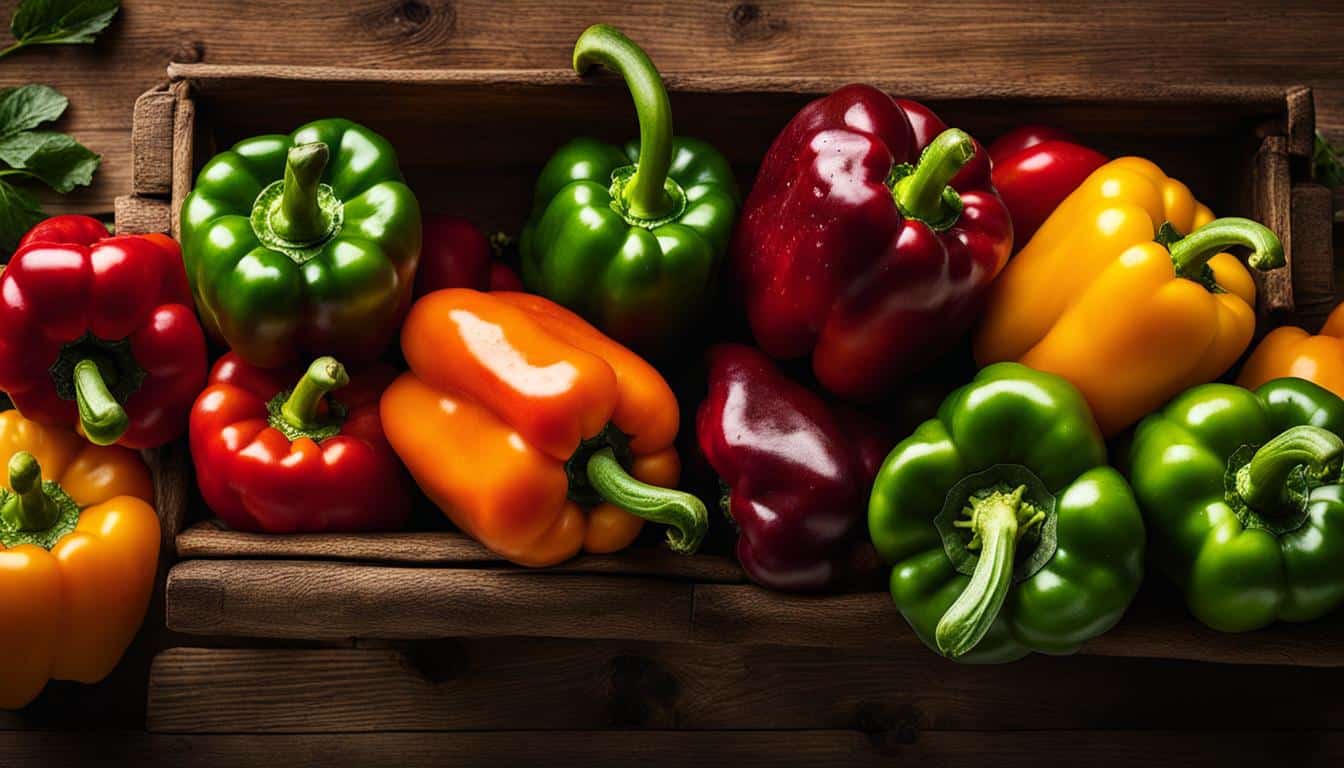
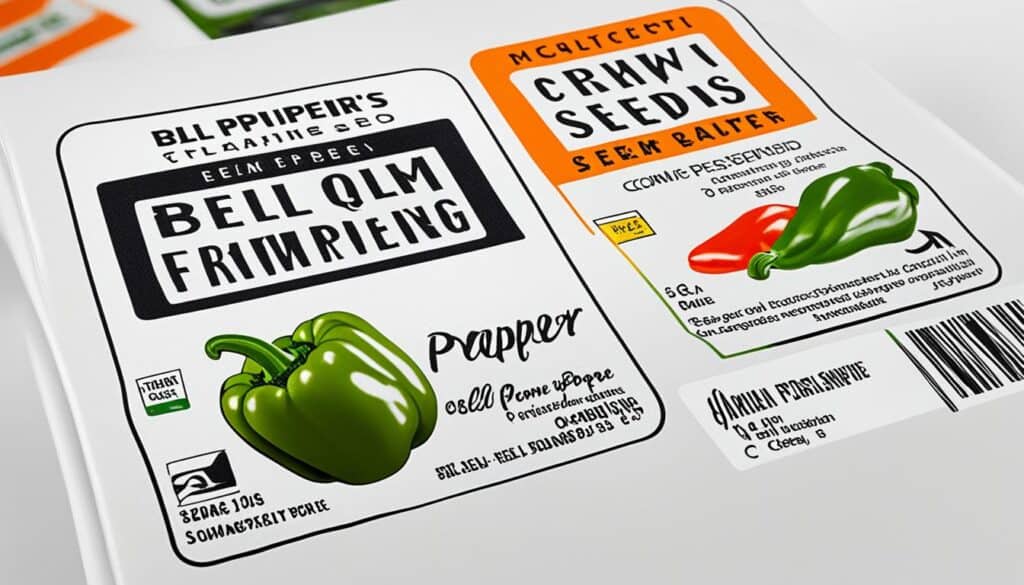
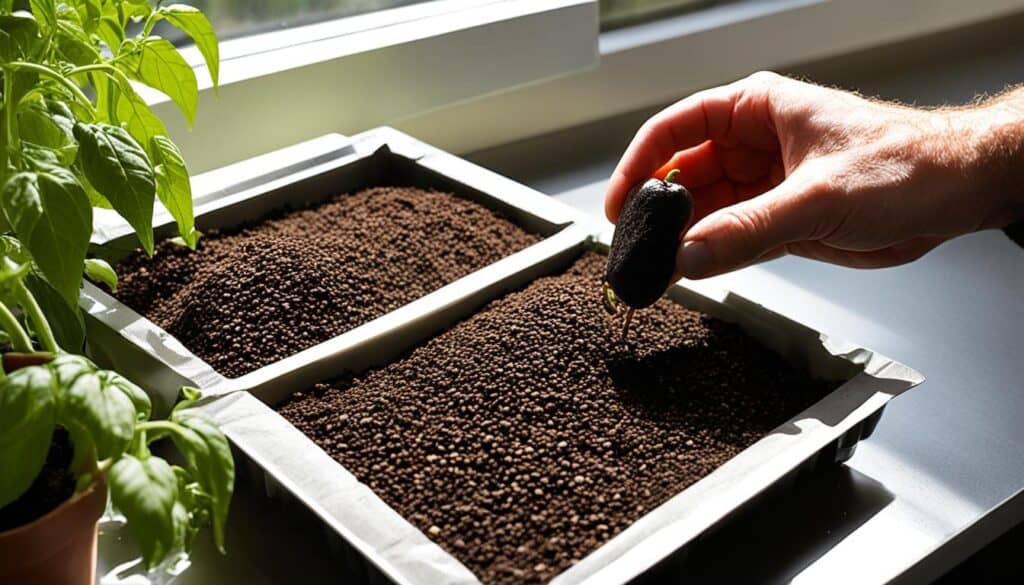
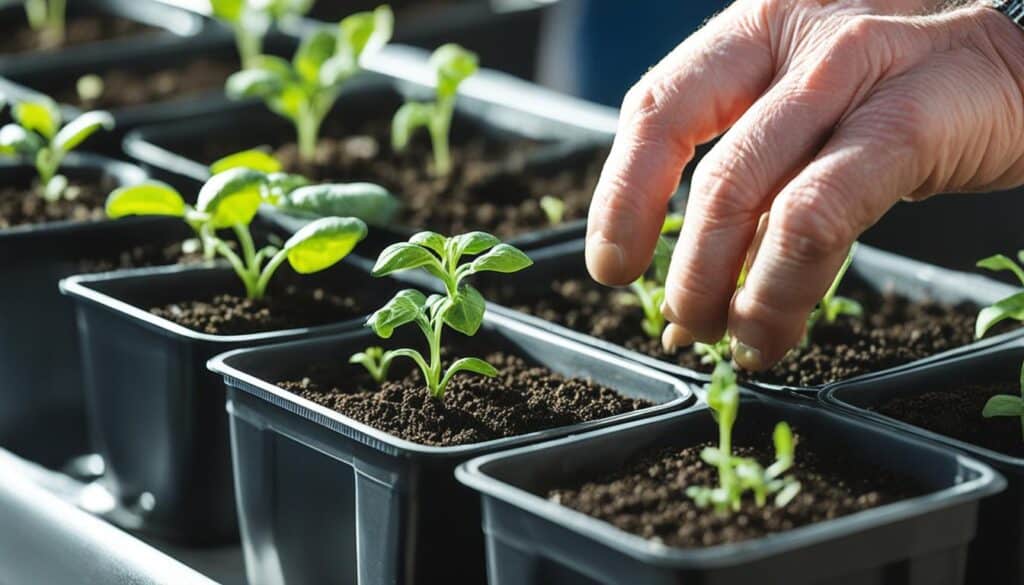
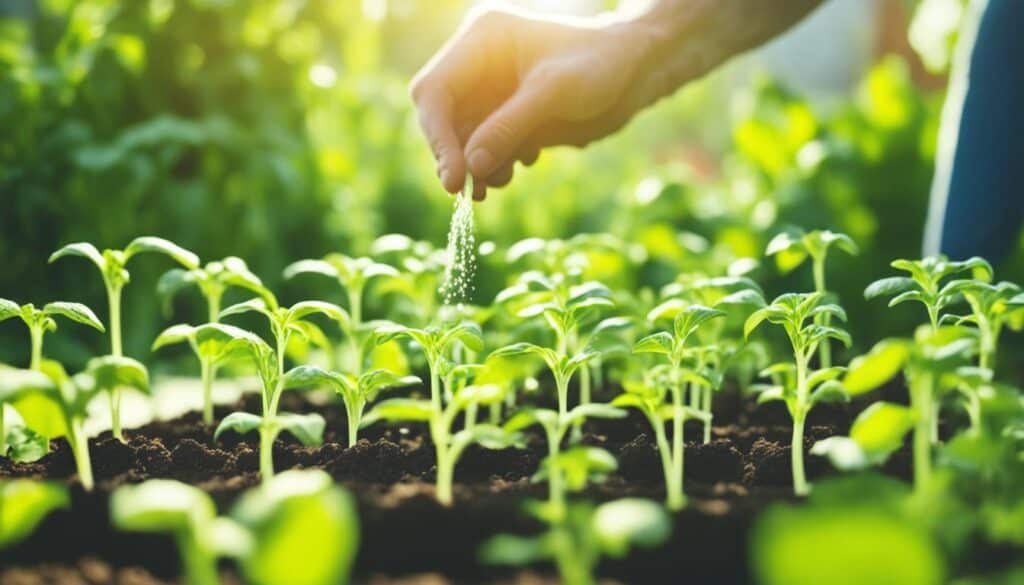
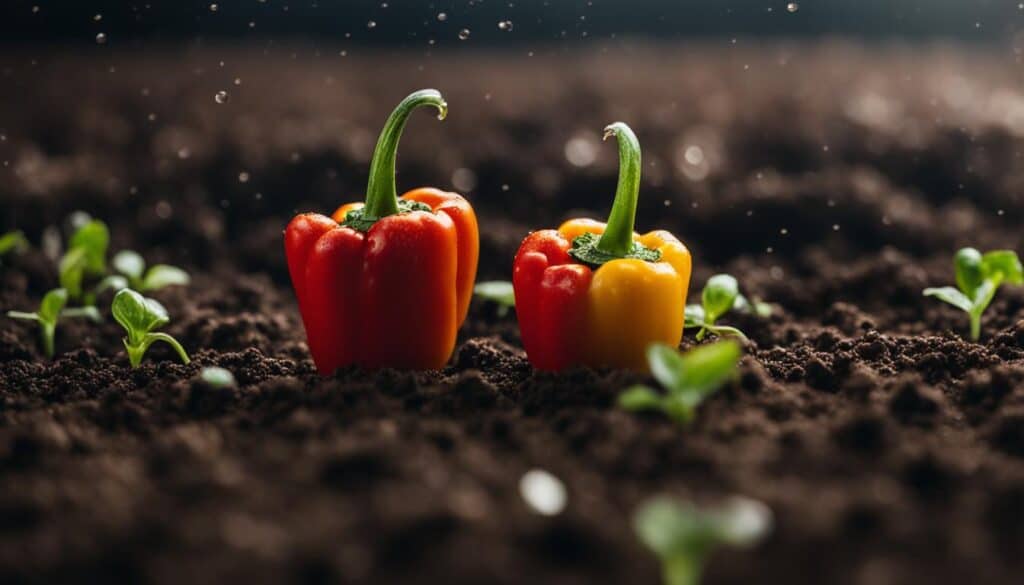



Leave a Reply